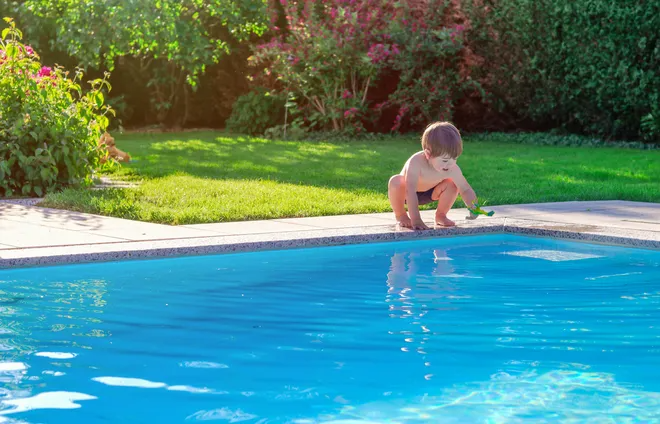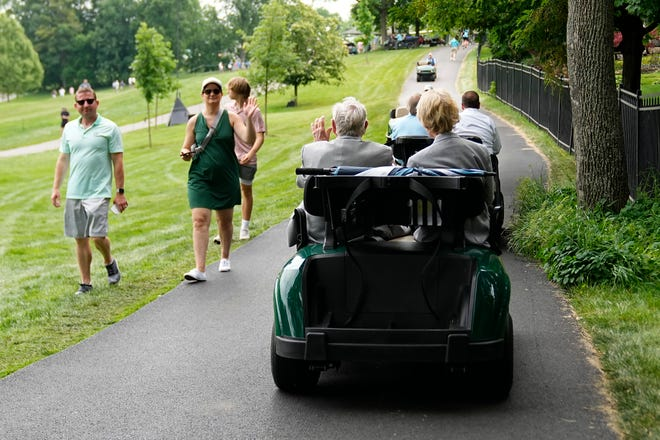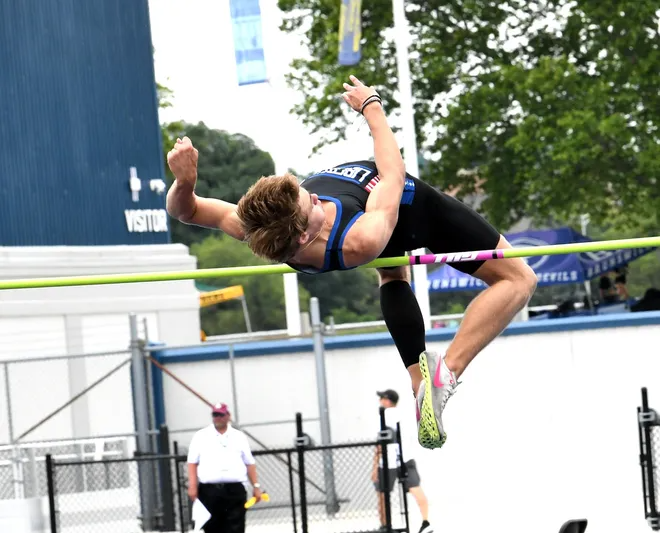- Drowning is a leading cause of death in childhood, especially for children under 4 years old.
- There are many steps parents can take to help prevent drowning at home, in a public pool, and around natural bodies of water.
- Drowning is fast, silent, and not what you’d expect. It can happen in as little as 30 seconds.
Summer is nearly here, which means families will be heading to pools for fun and relief on hot-weather days. But it’s also a good time to revisit ways to keep kids safe so those joyful days don’t turn into tragedies.
May is intentionally National Drowning Prevention Month because it’s right before pools and lakes open up around the country. Drowning is a leading cause of death in childhood, especially for children under 4 years old, the American Academy of Pediatrics states, and 69% of those drownings happen during non-swim times, according to Modern Pediatrics.
Though early exposure to water and swimming is important for water safety, there are other measures parents should take to prevent the worst outcomes possible at home, on vacation, or near a pool or other bodies of water.
Here are tips parents and caregivers should follow to help prevent drownings.
Water safety at home
Babies can drown in as little as one inch of water, so of course, never leaving a child unattended is the most important rule to follow.
It can be beneficial to learn CPR if you do find yourself in an emergency situation. The American Red Cross has detailed instructions on how to administer CPR on toddlers and babies safely.
It can be hard to monitor everything at once, especially when you have multiple kids. But there are more steps you can take to help prevent drowning.
Safe Kids Worldwide, a nonprofit organization working to reduce unintentional injuries to children, shares the following tips for water safety at home:
- Empty all tubs, buckets, containers, and kids’ pools immediately after use, and store them upside down out of reach.
- Keep lids on toilets and doors in bathrooms and laundry rooms closed when not in use.
- Install fences at least 4 feet tall with self-closing and self-latching gates around pools.
- Stop Drowning Now suggests installing alarms on the house door that leads to the pool area. You can also purchase a floating pool alarm or a below-water alarm in the pool. An alarm isn’t a substitute for appropriate fencing and supervision, but it can help.
- Keep rescue equipment (such as a shepherd’s hook or life preserver) and a telephone by the pool, the Arc of California states.
Water safety when at a public pool
The National Drowning Prevention Alliance outlines five layers of protections that include what to do when enjoying a day at a public pool with young kids, especially those under 5 years of age.
“Drowning is fast, silent and not what you’d expect,” the NDPA states. “And it can happen in as little as 30 seconds—about as long as it takes to reply to a text message.
Drowning is preventable with the following layers of protection:
- Exposure to water can reduce the risk of drowning for up to 90% for children ages 1 to 4, the NDA states. Infant swim lessons are so important. Children can learn to float and then swim, adding an added layer of security for if they ever fall in.
- For kids who lack water competency, life jackets are non-negotiable.
- When around a pool, make sure there’s a designated water watcher, whose sole job it is to watch the kids around water.




































